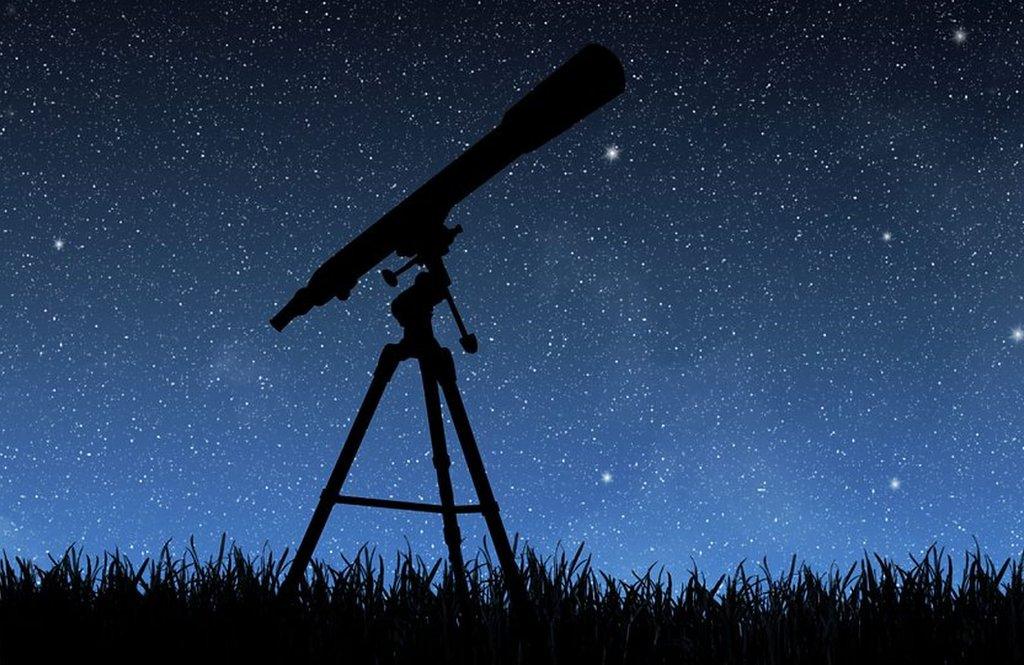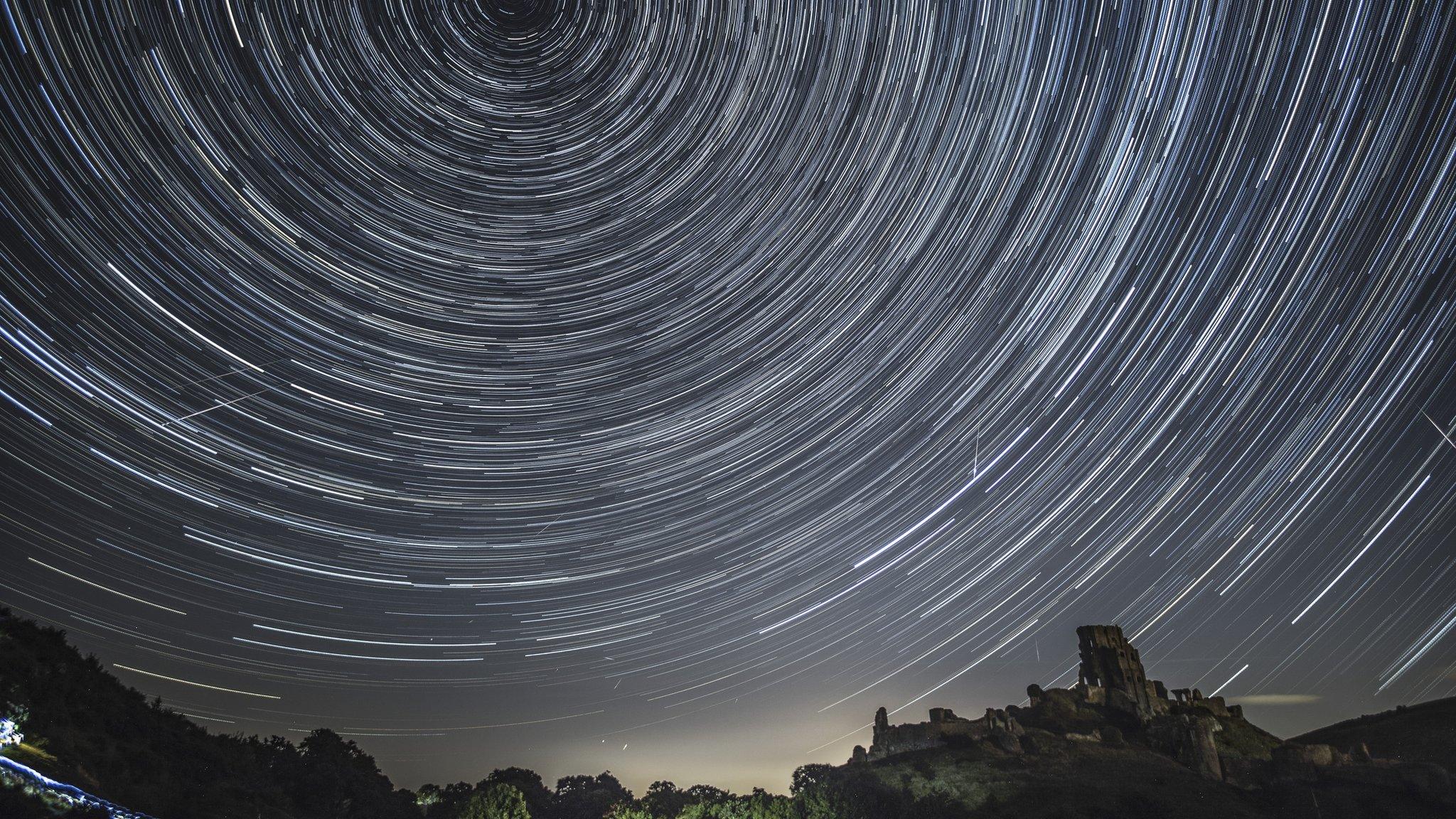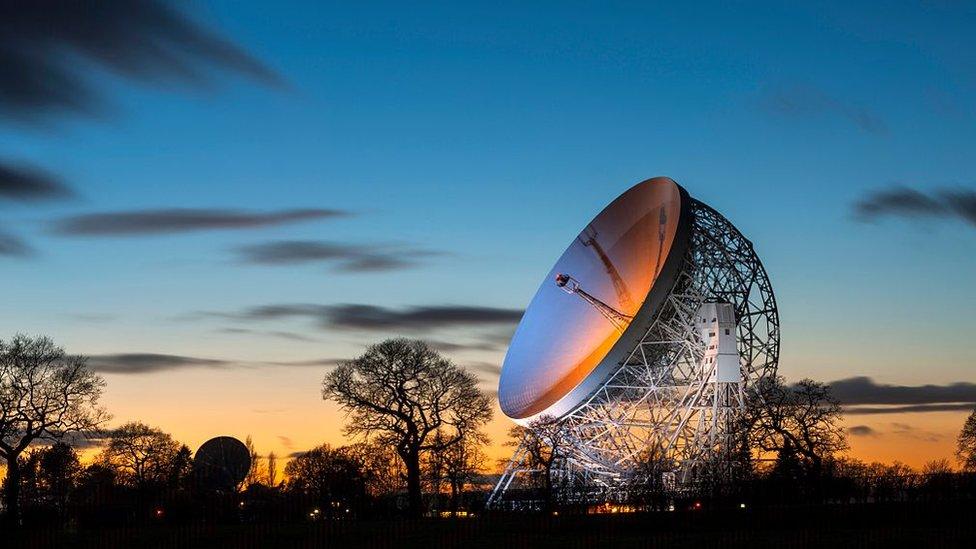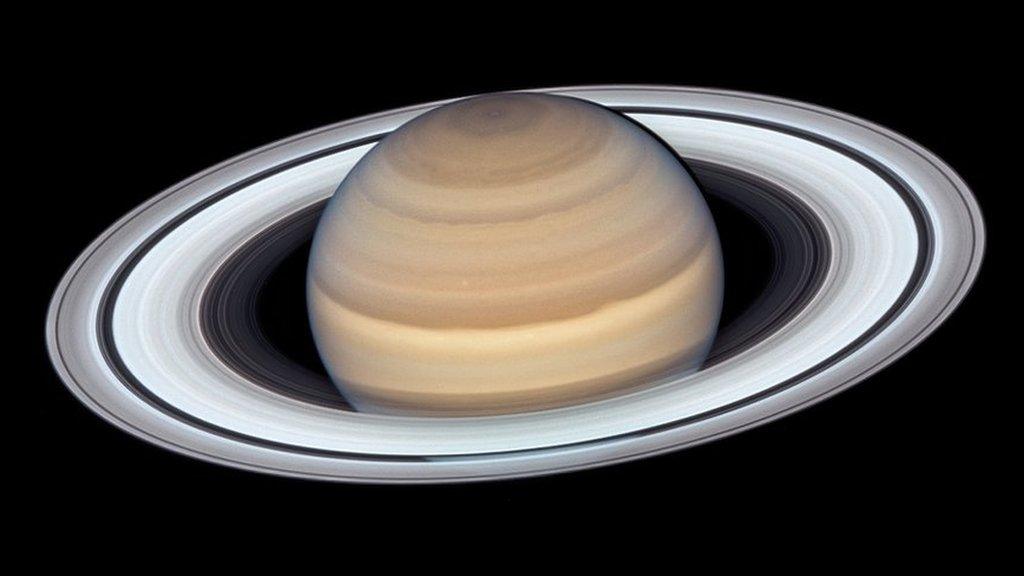Royal Mail stamps to mark Royal Astronomical Society anniversary
- Published

Some special stamps have been released to mark the 200th anniversary of the Royal Astronomical Society...and they're out of this world! All of the pictures are of phenomena which have been discovered or investigated by UK astronomers and astrophysicists, including this comet. 67P is an ancient object that formed before the planets more than 4.5 billion years ago!

Although Enceladus is a small, icy moon it's actually the sixth largest one around Saturn. It has a system of geysers that spray water and vapour into space!

Despite the bright oranges, reds and yellows, this is the black hole stamp! Black holes are areas of space where the density of matter is so great that nothing can escape the gravitational pull.

Just like Earth, the giant planet Jupiter also experiences auroras. These are when coloured light appears in the sky naturally. While Earth’s auroras come in visible wavelengths of red and green, Jupiter's shine in the ultraviolet part of the spectrum and as x-rays.

This one looks a bit like something out of Star Wars! It shows pulsars which are rapidly rotating neutron stars. They are a bit like a lighthouse! When they rotate, they beam radiation across space, sometimes many times a second.

This one looks pretty awesome! It shows Cygnus A which is an 'active galaxy' - that means that something other than the stars within it is producing a lot of energy inside the galaxy. Exciting stuff!

This one looks a bit like a poppy, but it's actually the Cat's Eye Nebula which is 3,000 light years away. It's a gas cloud - that was once inside a star - expanding into space. This is a little bit like how things might look when our Sun dies.

Even though it looks a bit like a face with golden goggles on, it's actually showing something called gravitational lensing. That happens when something massive in the sky bends light from far away. It then creates distorted and multiple images.
- Published30 August 2022

- Published13 February 2023

- Published20 July 2019

- Published4 October 2019

